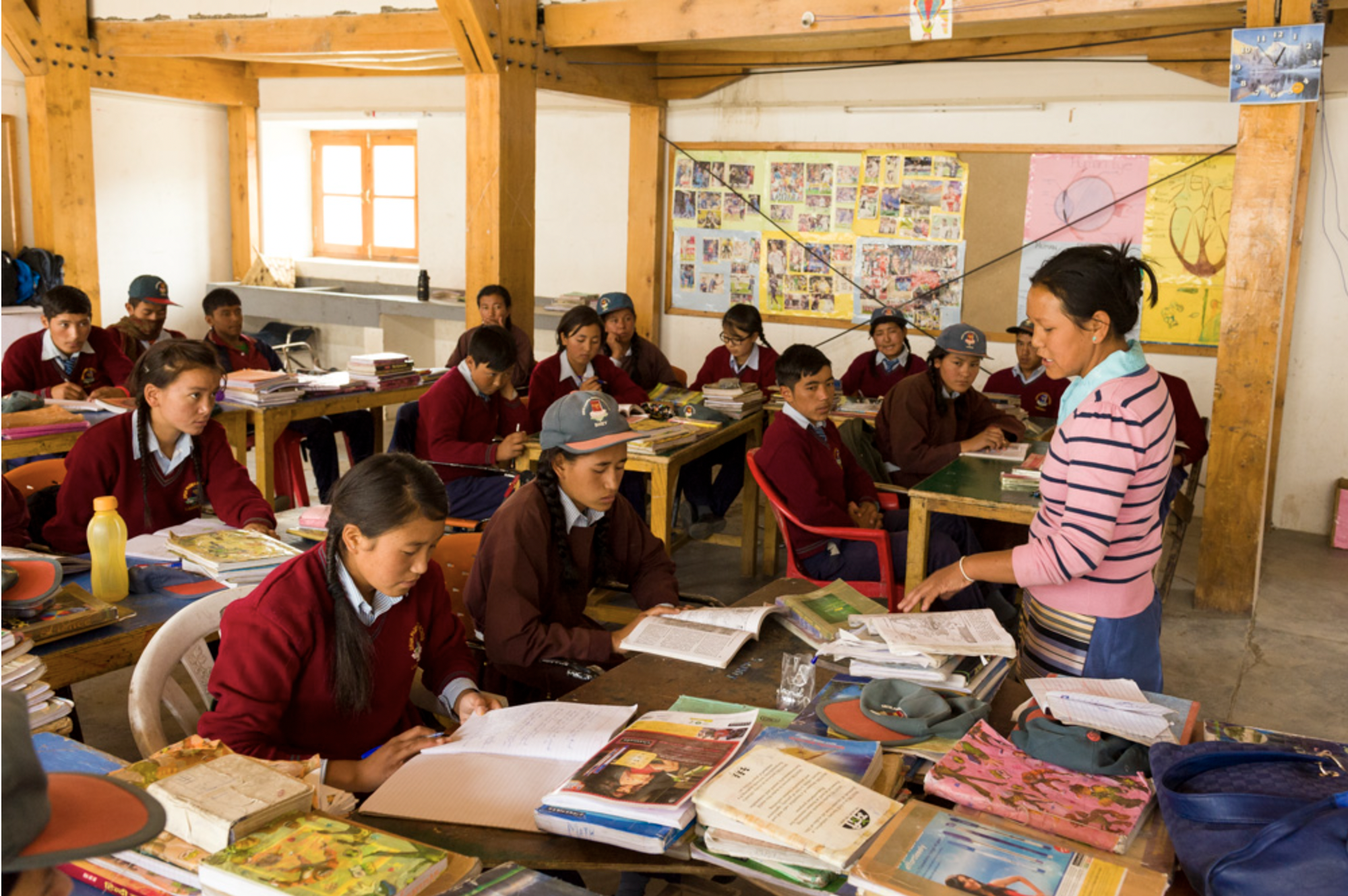We begin our series of featured Academic Blog posts from this response written by Monica Olivera, an outstanding student who excelled as a part of the Office of Global Initiatives’ 2021 Local to Global Internship Series. Monica partnered with Live to Love International, specifically with their base in Ladakh, India. Her blog entry was written in response to “School Has Been a Right for Girls in India Since 2009. So Why Aren’t They Going?” – written by an unknown author, and published by Time on June 27th, 2019.
Gender Issues and Education by Monica Olivera
An article on the gender issue of education from Time has the same title as its starting question, “School Has Been a Right for Girls in India Since 2009. So Why Aren’t They Going?” The statement leads one to think, ‘well, what are the factors that girls in India face that make them not attend school.’ A factor that may come to mind is income due to school being expensive; the family cannot afford to send their children to school or continue paying for their school expenses. However, the article revealed that housework is the reason that stops girls from going to school (Time, 2019). Housework is an issue that relates heavily to gender stereotypes and norms because it is associated with being “women’s work.” Therefore, young girls fill this role of caring for their younger siblings and the house while their parents or guardians work to make ends meet. Although these girls remain at home to support the working adults, women only make up eighteen percent of India’s GDP and twenty-five percent of the country’s labor force (Time, 2019). Thus, gender plays a crucial component in an individual’s opportunities and access to education and employment.
The relevance to social change is mentioned in the article as nothing has changed for girls after a decade since the Indian Parliament implemented the Right to Education Act in 2009. Hence bringing awareness that India’s attempt to increase children getting an education has not been successful as it needs more work done. The article then goes into the depth that there is always an obstacle limiting girls’ right to an education, whether it be their household, society, and aging (Time, 2019). Therefore, elaborating that for girls to attend and remain at school requires their environment to change. In this sense, altering the notion of gender roles such as housework is a women’s chore and that their future is being a housewife. The efforts so far have been neutralizing housework as a shared duty between men and women, meaning the task belongs to no specific gender (Time, 2019). In classrooms students have begun to see representations of men and women stirring away from gender norms in their textbooks. Another attempt is showing that women can attain and pursue professions outside of being caretakers at home. This exposure allows students to understand and normalize seeing women and men as equals regardless of gender.
The issues around gender equality and education can be addressed through sustainable development. To alter the perception and treatment towards males and female for the future generation depends on the willingness and efforts of present society. NGOs are currently working on these issues as many focus on empowering girls, protecting children and their rights, and promoting gender equality. Live to Love; an NGO, empowers girls through working with the Kung Fu Nuns who teach them self-defense to feel confident and safe. The organization also empowers girls through supporting Druk Padma Karpo School, a school surrounded by the Himalayas and high altitudes of deserts (Live to Love, n.d.). Despite the remote location, the school is a source of encouragement and growth as they educate future agents of change. Live to Love and the school create an environment that allows students to pursue leadership opportunities without requirements or limits such as their gender and background (Live to Love, n.d.).
Another NGO tackling the issues in gender and education by protecting children and their rights is Butterflies. The organization has severe programs that range from increasing literacy rates, providing technology services, and securing that households met their children’s needs (Butterflies, n.d.). Mobile Learning Centre is a program Butterflies established that brings education to children in remote areas that cannot go to school or have limited educational resources (Butterflies, n.d.).
The work of these NGOs demonstrates the practice of the micro and mezzo levels of social work. Micro as they focus on the child and provide resources that assist them to attain their rights and flourish in life. Mezzo as they work with the children’s community they reside in, or the school they attend, focusing on the overall needs of the population. Furthermore, the actions of Live to Love and Butterflies confirm the urgency expressed in the article on social change. For instance, eliminating the limitations caused by gender roles and norms as they work to empower girls and protect children and women of their rights
Challenges in gender equality and education come from the stigma and biases surrounding women and men in their environment. They begin to experience this as children in their home and school, which follows them as adults in their workplace and other domains. Society confines them to how a woman and a man should behave, possess, and accomplish in their lives. Meanwhile, the success of addressing the issue has made some progress thanks to the involvement of NGOs and advocators. However, there is still much work that needs to be done as the article notes that current actions are the foundation that will lead to all girls getting an education and attending school.
References
Butterflies. (n.d.). Butterflies. https://www.butterflieschildrights.org/
PROJECTS. (n.d.). Live to Love. Retrieved August 12, 2021, from https://www.livetolove.org/projects
School Has Been a Right for Girls in India Since 2009. So Why Aren’t They Going? (2019, June 27). Time. https://time.com/5614642/india-girls-education/


